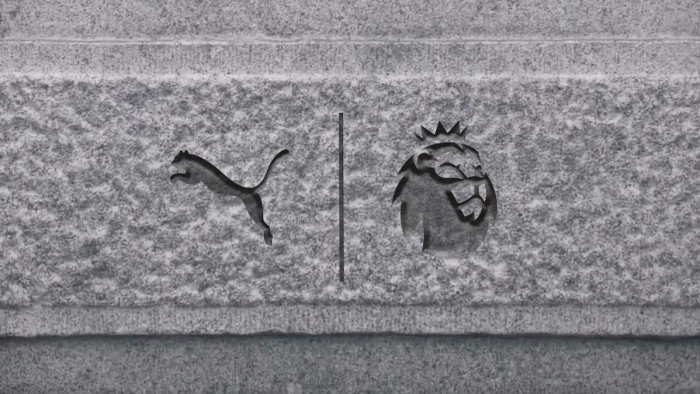They were the biggest team in the North American Soccer League but folded in 1984 due to money strains. But now the flame has been rekindled, finds Shortlist’s Matt Hussey, with pele at the helm.
On a sultry summer’s night in 1977, at the top of the Cosmopolitan Hotel in Portland, Oregon, a party was in full swing. A tall, shaggy-haired man cut his way through the crowd gathered in the lounge before stopping in front of a shorter man and asking, “One more time, I want to dance with you.” Moments later the two men were falling about the dancefloor, attempting a samba, but ended up giggling like schoolgirls and stepping on each other’s toes.
Nothing out of the ordinary you might think — except the tall figure was Franz Beckenbauer and the shorter man was Pelé.
Why were the two titans of European and South American football dancing together? They’d just been crowned champions of the North American Soccer League (NASL) and simultaneously kick-started the United State’s tumultuous love affair with the beautiful game.
Some 30 years before Real Madrid’s ‘Galacticos’, the New York Cosmos boasted a team-sheet most managers could only dream of as the sport’s popularity soared in the US. But, in 1984, the club was disbanded, never to be heard from again until August this year when Pelé announced, “We are to bring the beautiful game back to New York.”
The former poster boy of the Cosmos was handed the presidency of the club, with other former team-mates returning to help re-build the club by 2013. Within a few hours the news had become a major trending topic on Twitter and sports writers throughout the US speculated in anticipation at who would be the first megastar to don the club’s colours. It’s a remarkable story of the rise, fall and re-birth of an iconic club.
A TEAM IS BORN
In the Sixties, there weren’t any recognised professional soccer leagues in the United States. “It was a country where 99.9 per cent of the population had never heard of [the game],” says Clive Toye, NASL co-founder. It was only after England’s World Cup win in 1966 that the US, and more importantly Steve Ross, the 39-year-old CEO of media company Warner Communications (which became Time Warner in 1990), started to take notice of the world’s most popular game.
“It captivated him,” says Jay Emmett, vice president of Warner Communications from 1970-81. “The man owned movie studios, six record companies and a business doing billions of dollars a year, but he was enamoured with going in the locker room.”
Prior to the Cosmos, US investors had thrown money into the sport and established the NASL in 1968, which consisted of 19 teams from the US and Canada. Ross convinced investors at Warner to stump up the cash to set up a New York team and hired Toye, a former British sports writer, as the club’s general manager, who was charged with coming up with a name. “The previous New York professional club had been the New York Mets [having disbanded before the NASL started]. Mets is short for metropolitan, so I thought, what’s bigger than metropolitan? Cosmopolitan, suddenly it clicked, ‘Cosmos.’”
FOOTBALL’S NEW HOME
Within four years of the team’s inception, the Cosmos won their first NASL title in 1972, but the US public took little notice. “There were maybe 50 people in the stands, and most were the families of the players,” said former Cosmos vice president Raphael de la Sierra. Despite moving the team from Hofstra Stadium some 25 miles from Times Square to Downing Stadium (seven miles from the city centre) they still needed something special to bring in spectators.
In 1974, Pelé announced his retirement from his beloved Santos in Sao Paulo, after a gruelling 20-year stint (he played 1,120 times for his club and 92 times for his country). Despite his ailing physical fitness, he was still regarded as the finest footballer on the planet, not to mention the most recognisable. This was the opportunity the Cosmos needed to get some much-needed publicity.
However, news of Pelé’s retirement hadn’t gone unnoticed elsewhere, as Toye explains. “Real Madrid and Juventus were sniffing around, so I said, ‘If you go to Real or Juventus all you could win is another championship, whereas if you come with us you could win a country.’”
Miraculously, Pelé shunned Europe and signed for the Cosmos for three years to become the world’s highest-salaried athlete, aged 34. The impact was instant. His first match was televised in more than 22 countries and covered by more than 300 journalists from around the world. Within seven games he’d scored five and had four assists, helping the team win seven out of nine games. Between 1971 and 1975, the Cosmos’ average game attendance figures nearly tripled from 4,000 to 10,000.
But for Ross, the world’s greatest player was not enough. In 1975, he signed five new players, including Italian international Giorgio Chinaglia — who responded by scoring 19 times in as many games, taking the team to the play-offs, narrowly missing out on the title. “For anyone playing soccer at the time, the New York Cosmos were an idyllic opportunity for any young footballer. I knew it was a club I wanted to be part of,” Chinaglia tells ShortList.
The formula was simple: sign the world’s greatest players and the fans and trophies would follow. Franz Beckenbauer, Brazil’s World Cup-winning captain of 1970, Paraguayan midfielder Julio César Romero, Yugoslavia midfielder Vladislav Bogicevic and Carlos Alberto all rushed to join the Cosmos football revolution.
So unexpected was the flood of foreign talent, that today’s Major League Soccer limits the number of foreign players in a team to eight thanks in part to the Cosmos’ extravagant shopping spree. “The United States had never seen anything like that. To have those types of players in a great city like New York, it was huge,” says lifelong Cosmos fan Roberto Ramirez.
By the time Pelé’s playing contract came to an end in 1977, the club had won its second title, and attendance figures were at an all-time high — the team still holds the US record, with an average game attendance of 47,856. The Cosmos locker room became Hollywood’s new red carpet — the club boasted celebrity fans such as Robert Redford and Steven Spielberg. Steve Marshall, Cosmos’ travel secretary, recalls: “I remember once, [coach] Gordon Bradley, looked over in the corner [of the locker room] and saw this guy with longish hair, skinny as a rail, looked like he was on drugs. Bradley told our security guy, ‘Get that guy out of here!’” The person he was referring to was Mick Jagger.
Steve Ross had put the New York Cosmos on the world stage. The team had a table on reserve at the iconic Studio 54, and simply mentioning the team’s name granted you access. But beneath the glamour, the parties, and the trophies, the New York Cosmos — and American soccer — was in trouble.
DOWNFALL
While the world watched the Cosmos win three championships in four years between 1977 and 1980, football in the US was going through a crisis. In 1980, ABC Sports, the TV network that had championed the game, pulled the plug on the league after just one season — the sport wouldn’t receive the same coverage again until the World Cup was hosted in the US in 1994.
The trend for signing the world’s greatest talent – and the huge wage bills that followed — meant clubs across the US were running up huge deficits, and without TV revenues to balance the books, they simply went bust. Steve Ross’s Cosmos tried to keep the league afloat, but Warner Communications’ biggest revenue earner, Atari, suffered huge losses in the video-game crash of 1983 when the market was flooded with cheap games and consoles, leaving Ross with no choice but to disband the club in 1984, with the NASL following suit months later.
Peppe Pinton, the former owner of Lazio, bought what was left of the club, holding on to the trademark until a group led by Paul Kemsley — the former VC of Tottenham Hotspur — acquired the club’s name and announced its re-birth in August. The club’s owners are currently in the process of applying to be part of Major League Soccer (MLS) as Terry Byrne, vice-chairman of the Cosmos, explains: “We hope to be their 20th franchise in 2013 and will do anything in our ability to get top consideration for this spot.”
Despite not having a team to speak of, various players have already been linked with the resurgent club, including 35-year-old David Beckham. “The eventual first team would consist of top players developed through our academies, as well as a combination of talent from the US and overseas. Any star signings would take place under the current rules of Major League Soccer — which allows each club to sign two designated players outside of its salary budget,” says Byrne. The club has even already agreed a deal with kit-manufacturer Umbro.
Despite resistance — at both club and league level — to revive the Cosmos’ spending power (at its peak, wages were 10 times higher at the club than its rivals), people still believe the Cosmos have the power to re-ignite football in the US. Scenes such as those at Portland’s Cosmopolitan Hotel may be a thing of the past, but with Pelé once again at the fore, football is very much part of the country’s future, thanks to the Cosmos.
Check out the funkiest football kits here.
(Image: Peter Robinson)
Latest
Related Reviews and Shortlists










